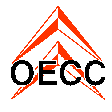| OECC: Home « The OECC | ||||||||
|
A brief introduction to OECCOECC is short for OEsterreichischer Citroën Club (Austrian Citroën Club) - a rather casual association of drivers of all Citroën types; we have about 400 local members, mainly owners of A types. Founded in 1971, the OECC was originally meant to approach all Citroën drivers, but very soon the main emphasis was shifted to the small Citroëns. Today the focus ranges from the Traction Avant and the 2CV of the 1950s to the so-called "youngtimers" of the 1970s and 1980s and on to currrent Citroën types. The OECC is made up of more than 20 local Citroën clubs, which - as their names show - mainly came into being at a time when the main focus was on the 2CV. These "branch clubs" organize meetings, rallyes and other events all year round - but don't imagine such events as focused on presenting your own vehicle in a rather stiff atmosphere; they are more like an informal get-together of people with the same kind of interest, no matter what their profession or social background. As a club specialized on one particular make of car, we closely cooperate with Citroën Austria; we are also part of the ACI (Amicale Citroën Internationale), an umbrella organization for all Citroën clubs worldwide, authorized by Citroën France. But the OECC declares itself also as a vintage car club, assigned to restore, to maintain and cultivate old Citroën vehicles, thus preserving technical and cultural heritage. As a vintage car club, we are a member of the ÖMVV (Austrian Association of Vintage Cars), an umbrella organization joining more than 80 Austrian oldtimer clubs and representing them both on a national level and as a member organization of FIVA (Federation internationale des vehicules anciens) on a European level and even worldwide. Apart from the official registration as a "historical vehicle", OECC members may have their vehicles, which must be more than 30 years old, registered as vintage cars by the OECC. Such vehicles will receive a FIVA-ID card which is valid worldwide and does not only entitle the holder to participate in international vintage car events but also authorizes the vehicle to enter so-called "environment protection zones" within German cities. In order to obtain such a registration, our members may present their vehicles to one of our five experts, who were authorized by the ÖMVV to assess and confirm the state of preservation of a Citroën vehicle. Further information about vintage cars in general can be obtained at www.oemvv.at or, regarding Citroëns, from the OECC. A brief explanation for those who may have come across this page rather casually and can't make head or tails of the above-mentioned models' names: among Citroën A models rank the 2CV (the "ugly duckling") and its derivatives like the Dyane, the Mehari, or the Ami. Utility cars like the AK400, the AZU250, and the AU (2CV vans) as well as the Acadiane (Dyane van) also belong to this class.
And it still moves! And it moves through the whole of Europe, Africa, Asia, America and Australia. And, of course, it heads for the meetings of other clubs, as well, so as to nurture international contacts. I just can't describe how it feels to travel through the world on 28 h.p. To the family of D models belong ID and DS (1955-1975), the goddess (DS is a homophone of French "La Déesse", which means goddess), but also known as "the shark". It was THE luxury car of that period and the first vehicle with standard hydropneumatics, a feature allowing its driver to even go on three wheels! The H-van (HY, HZ) is one of the last saurians on Austria's roads, a corrugated-iron van, which used to do its best in the struggle of every day's duty. Nowadays it serves almost exclusively as a camper for families who have grown too big to go to meetings in a 2CV.
translated by Evi |
|
|
Tipp Print Version: oben rechts, |
| Top | « ^ » | |
URL: http://www.oecc.org | Stand: 15.03.2013 | © Hannes Hromadka |
